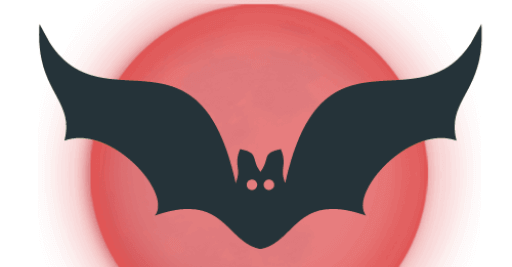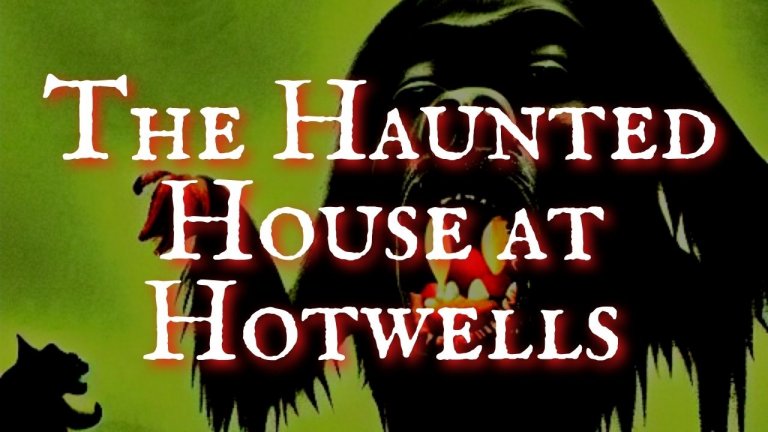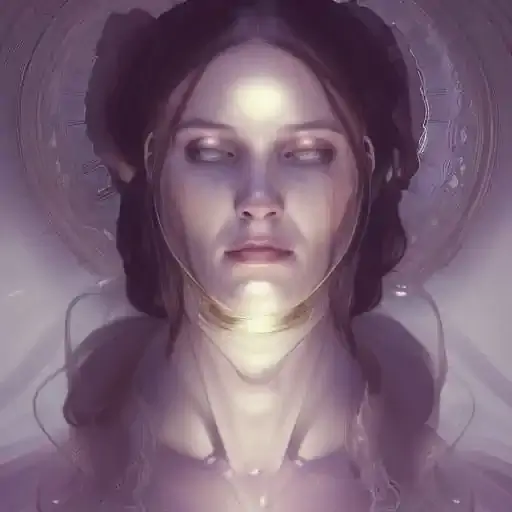The Hexham Werewolf
An apparently true tale of stones that came to life

Photo by Virginia Johnson on Unsplash
The Discovery
It was an average day in an average house in an average town, and this all happened to an average family. In fact, they would be the first to say that there was nothing unusual about them or their lives. Up until the point they found the heads.
It happened like this. We can imagine a break in the rain or a beautiful spring day, but whatever the weather, in May in 1971, two brothers Colin and Leslie Robson, were playing in their garden. We know it was May because their sister later confirmed she was on her honeymoon and away from the house when it happened.
Colin and Leslie were amusing themselves by throwing stones at each other. Apparently, it’s fun. As the lads stooped to find missiles and grubbed in the dirt, they both found a stone head. One each.
These little stone heads were the size of a boy’s fist. People later described them as tennis ball sized or about 6 cm in diameter. Not that anyone used centimeters in England in 1971.
The stone the heads were made of was greenish-grey and glistened with quartz crystals. The heads were round-ish, seemed to be carved of local stone, and had irregularly shaped features, holes for the mouth and eyes, ridges for the nose, and they were not identical.
Looking at the photographs, you might even be forgiven for saying they looked evil. The heads had a minimal neck, but it ended in a flat area as though they had once been attached to bodies and been cut off. Two explanations were later given for this smooth, flat base:
- the first was that they had once been set up in a Celtic shrine, placed in a niche to guard the temple;
- the second was that the necks were smoothed off at the University of Newcastle, or the University of Southampton so they could be studied.
A guy called Paul Screeton wrote a book about the stone heads called The Quest for the Hexham Heads (2010), and he described head #1 as “The Boy”. The boy’s hair is carved in stripes running from forehead to crown.
Head #2 is the “The Hag”, and she’s female, apparently. She is described as having ‘wildly bulging eyes,’ and a ‘strong-beaked nose’.
I have been described in similar terms, I must admit, so she sounds pretty attractive to me.
It should be said that Celtic stone heads are very common in the North of England and even across the Celtic World, so it was not an extraordinary thing to think that the Hexham heads were further examples of these old cult objects.
Enter the Weresheep
At first, the heads were a curiosity. They looked old, but they were so roughly carved that they were difficult to date and could have been made at any time from the retreat of the last Ice Age up until the day before. I guess there was some family discussion about them, then they were put aside, and that was that.
Until things started happening.
3 Rede Avenue is what they call a ‘semi-detached’ house. In the USA, these are called duplexes.
The neighbors who lived next door to the Robsons, at 1 Rede Avenue, were Mr. Isaac Dodd, Mrs. Ellen “Nelly” Dodd, and her sons and daughters, Brian, Carol, Marie, and Trevor.
Shortly after the Robson boys found the heads next door, Ellen’s son Brian woke up terrified claiming something had pulled his hair when he was asleep.
His mother, Ellen Dodd went to sleep in his room to reassure him. The stories are mixed here up because some accounts say she was with her daughter Marie who had an ear infection and others with her son Brian.
Version one has her with Brian, trying to comfort him because something was pulling his hair. In this version, Ellen looks up, and there she sees the thing.
Or,
— Ellen was putting her sick daughter Marie to bed. Marie had an ear infection. Ellen heard something coming in, turned, and screamed as a ‘horrifying creature’ described as half man and half animal entered the room.
Ellen said the monster touched her, then ‘on all fours’ it left the room.
Later, it was described as half-person, half-sheep. You heard it right, half-sheep! (Some say half-goat).
Whatever the truth, Ellen Dodd and family couldn’t live in that house and asked to be rehoused. Later on, in 2008, other mysterious things happened at 1 Rede Avenue.
About the weresheep — don’t disbelieve! Because on a lonely-road about three miles from where I’m typing this, on bright moonlit nights, and sometimes on rainy fog-bound ones too, a mysterious creature, half-woman, half-sheep, lurks in the woodlands and comes out to attack travelers. She’s called Bella Sheep Head, and she’s real.
Rotating Heads
Back in the house at 3 Rede Avenue, the Robson family noticed that the heads seemed to rotate of their own accord. They could be left looking one way at bedtime, but by breakfast, they were gazing in the opposite direction. They would even move around the room when there was no one there, and the family reported poltergeist type activity, with bottles being thrown about by invisible forces.
The press took an interest and by 13 January 1974, (though this is three years later) there was an article in the UK national newspaper, The Sunday People, famed for doing sensationalist stories full of scandal, sleaze, and shock. The report was headlined Myth of The ‘Evil’ Heads.
However, the Robsons had already got rid of the heads. They gave them to the safekeeping of the Church, namely Hexham Abbey — a wonderful place that has a crypt dating back to the Anglo-Saxon period and is well worth a visit.
The Robsons gave the heads to Betty Gibson, who worked as a guide at the Abbey. This was in 1971. Shortly after she got them, Betty Gibson passed on the heads to Professor Richard Bailey, who worked at the Museum of Antiquities at Newcastle University
The academics at Newcastle who saw the heads, Roger Miket, and David Smith have made no claims about any supernatural events.
In 2017, the Hexham Heads Blog interviewed Colin Robson, who was one of the brothers who first discovered the heads. There is a bizarre claim about the family’s pet budgerigar dying at the time the heads were found. Colin denies that Sparky the Budgie was killed by the Heads. However, he does say that where they buried Sparky in the back garden a bush grew up and that bush gave off a faint, strange glow.
That reminds me of the HP Lovecraft Story, The Color of Out Space.
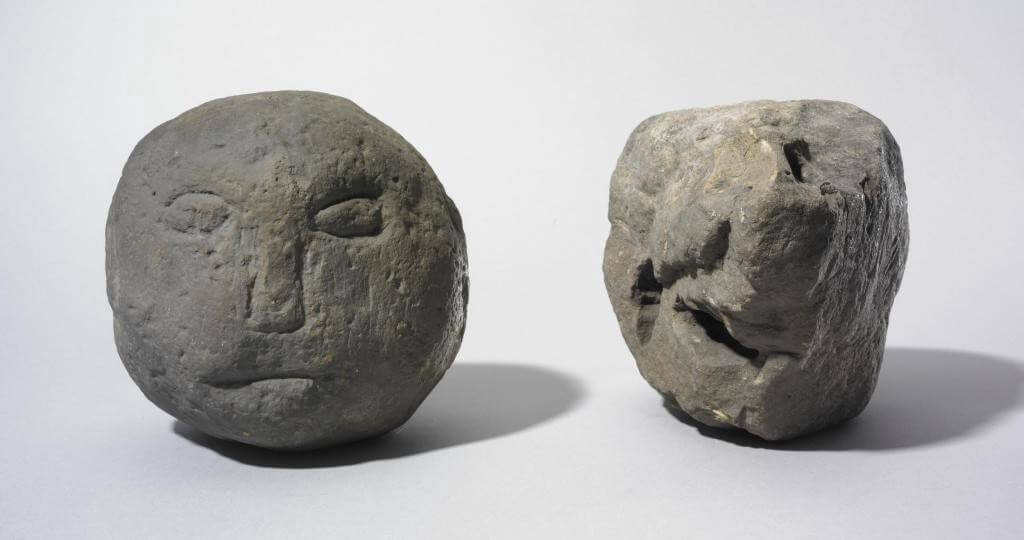
Bron y Garth Celtic Heads
The Heads Go South
The University of Newcastle sent the heads three hundred miles south to the University of Southampton. Dr. Anne Ross, an expert on pagan Celtic religion, had requested them. Her specialist area was the Celtic cult of the head, and she published papers about the numerous Celtic stone heads discovered all over Britain and Celtic Europe.
Dr. Ross took the heads into her own home on Rose Road in Southampton in November 1971. She says she instantly disliked them but planned to get them geologically analyzed. She put them in a box and forgot about them for a few days.
Shortly after the heads entered Dr. Ross’s house, she woke up at around 2 am to glimpse:
“…a tall figure slipping out of the room. My impression was that the figure was dark like a shadow and that it was part animal and part man. I felt compelled to follow it, as if by some irresistible force.”
Dr. Ross said that it appeared to be a wolf above, and a man below and it was covered with thick dark fur.
She jumped up, followed it so far, but was scared to go right after it, and it vanished after going downstairs towards the kitchen. She says at the time of the apparition; she did not connect it with the heads coming into her house.
She woke her husband, Richard Feacham, but though both searched for the wolfman, there was no sign of any creature in the house.
A few days after that, Dr. Ross’s daughter Berenice, then aged 15, came home from school at 4 pm. There was no one in at the time as her parents were at work. When her parents got back, they found Berenice in a state of shock. She told them she’d seen:
“..something huge, dark and inhuman on the stairs. It had rushed down towards her, vaulted over the bannisters, and landed in the corridor with a soft thud that made her think it feet were padded like those of an animal.”
Another time, it’s said Berenice was taking a meal up to her father, Dr Richard Feacham, who was ill in bed and found the werewolf standing on the stairs.
The Ross-Feacham family started seeing a dark figure all around around the house. At times it would solidify into a kind of werewolf. This went on for a few months. The cats would stand and arch their backs as if they saw the thing but the humans couldn’t.
Another time, Dr. Ross was working in her study at home when the door burst open with no apparent cause, and nobody was standing there when she looked. She reported an icy atmosphere and a sense of dread.
In later years, her son Richard Feacham did come forward and said that he too had seen the werewolf that his mother Anne and his sister Berenice had seen in their house in Southampton. Like with Ellen Dodd, the creature stood in the doorway of his bedroom, standing upright, but it was not a weresheep this time, but definitely a werewolf.
Paul also recounted that the family was eating together one night when they heard something heavy drop in the hallway.
Dr. Ross described the artifacts as ‘evil’ and claimed they radiated a wicked energy. She felt they were originally part of a Celtic death cult. She explained how the presence seemed to be thickening and getting more solid. She said it was “definitely growing” and so she had to get the heads out of the house.
Dr. Ross said the strange phenomena did not stop, and even after the Hexham Heads left her house, the peculiar phenomena did not go away. She had seven other definitely ancient Celtic heads in her collection at home and it was reported that even after the Hexham Heads had gone, apparitions still haunted the house at Rose Avenue. In the end, she had to get rid of the other heads too, and after she did, all was quiet.
Archaeology and Geology
When the Heads arrived at Southampton University, there was still no definitive proof they were archaeological artifacts at all. However, Dr. Ross treated them as such in her article on Celtic Heads.
The problem was the heads couldn’t be dated with radio-carbon because they had no organic parts or traces. The stone was local to Hexham, but they were so rudimentary that it was difficult to date on style grounds.
When Professor Hodgson, a chemist at Southampton University, examined them in 1972, he said they were sandstone with a high level of quartz. Professor Hodgson thought they were molded but not made of cement.
Later, Douglas Robson (no relation) of Newcastle University said that the heads were made of artificial cement, and certainly not sandstone.
Were these the even same heads?
When we check the geology underlying Hexham, we read:
The superficial geology of the terrace at Hexham is composed of alluvial sands, clays and gravels, lying above sands and gravels of glacial origin which in turn lie above a solid geology of Carboniferous rocks, predominantly sandstones.
The sandstones are greyish in color.
So that ties in.
A report for Northumberland County Council on the Archaeology of Hexham, published in 2009, says that there is no evidence for Roman presence at Hexham.
The Anglo-Saxons built a monastery there from 670 Common Era, but there is no evidence of Celtic settlement, though it seems likely there must have been some there. The local tribe was the Corionitotae, whose chief settlement appears to have been Corbridge to the west of Hexham.
Dr. Ross believed that there had been a Celtic Temple n Hexham. At one time she proposed to excavate the Robson’s garden in Rede Avenue in case there was a Celtic temple under there. However, that never happened.
The Prank
Then in 1974, Des Craigie, a local bloke who had lived at 3 Rede Avenue before the Robsons came out of the woodwork and claimed he made the heads for his daughter in 1956.
‘I made them — about 16 years ago. I made the heads from bits of stone and mortar simply to amuse my daughter when she was a little girl. I actually made three but one appears to have got lost. They were out in the garden for years. I definitely made them. I have been laughing my head off about these heads, and I cannot understand why all this attention is being paid to them.’
At the time, Mr. Craigie worked for a company that made things out of cast stone. He says his daughter asked him what he did at work, and so he made the heads in his lunch hour and took them home to her. His daughter seems not to have cared for them as it appears she buried them in the garden.
When challenged by Dr. Ross, who still believed they were ancient, or at least evil, Des Craigie made some more heads to demonstrate his prank. However, these new heads were inferior in quality, much poorer than the originals.
Dr. Ross said the original heads were made of stone, not plaster or mortar, and carved not molded. However, when the heads were examined by Professor Dearman of the University of Durham, he said they had been molded, not cut.
This would support Mr. Craigie’s claim. A report from 1972 by F Hodson from the University of Southampton also states the heads were stone. Dr. Hodgson did not think they were cement, but if they were made of local crushed stone and molded as Mr. Craigie claims, this would explain why they didn’t register as having cement in them.
In Don Robin’s book, he surfaces a rumor that Ann Ross thought that if the heads were modern they were the product of a black-magic cult given to the worship of ancient evil deities. Very Lovecraftian!
Dr. Ross, and others, have claimed that ancient cults continued from ancient Celtic times unbroken in other parts of England, for example in Derbyshire, about a hundred and fifty miles south of Hexham. So why not in Hexham? More Lovecraftian still…
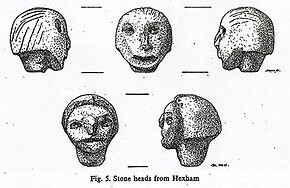
Hexham Heads by Mary Hurrell
What Happened to The Heads?
Between 1971 and 1974 the heads seem to have been in the possession of Dr. Ross. Latterly, she says they were in a box at Southampton University
We know that Mrs. Robson, the mother of the boys who found the heads, wrote to the University in March 1975 asking for the heads back. So, she was clearly not so freaked out by them.
There is a note from 1977 when Dr. Ross says that they were in Southampton in the possession of the geologist who sampled them in 1972. She said they had not been out of the box on his shelf since.
Don Robins (he of the Dragon Project) got hold of the heads on 21 September 1977 from Dr. Ross. He traveled to Southampton to interview Dr. Ross as he had become interested in the story of the Hexham Heads. She essentially said they were archaeologically worthless and agreed to let him take them to experiment on.
As soon as Robins he put them in his car and all the car electrics died. Thinking it was the heads, he firmly told them to ‘stop it’, and the car electrics came back on again.
He was wary of them and put them in a shed in his garden. Robins reported strange feelings emanating from the heds, particularly from the female head known as ‘The Hag.’
This was a distinct and growing feeling that the power, and the palpable sense of menace, actually resided in the wall-eyed hag.”
Robins said the heads were surprisingly small but very dense, and glittering with quartz crystals.
Robins seems to have passed the heads to Frank Hyde in 1978. If you see my previous stories about the Dragon Project, you will see that Don Robins was open to the mystical as well as the scientific.
Frank Hyde was an astronomer and electrical engineer who had side interests in dowsing. He is described as an astrologer, but I wonder if this is a mistake for an astronomer, which he definitely was.
Robins said that Hyde conducted experiments on the heads with a home-made Faraday Cage: a device for blocking out all electromagnetic radiation. Hyde used dowsing rods on the heads in the presence of Robins, and it was the Hag that attracted the diving rod and made it twitch.
Weirdly, after dropping off the heads, Robins was unable to contact Hyde again. He heard on the grapevine that Hyde had been injured in a bad car crash, but didn’t die.
Robins says that Hyde disappeared. He did not return any calls made to him by Robins, or anyone else Robins knew. He seemed to have simply vanished.
The Hexham Heads blog has dug up some recent information on the fate of Mr. Frank Hyde. They found that Mr. Hyde was living in Camden, London at the time of his death in 1984.
By this point, the heads had mysteriously, though some might say conveniently, vanished.
Weirder still, long after the disappearance of the heads, a family called Newton moved into 1 Rede Avenue. That is next door to number 3, where the Dodd family had lived at the time the heads were found. In 2008, The Newtons asked a priest to come round and exorcise the house because they had seen that weresheep thing in their house.
Conclusion: The Hexham Werewolf — Was It Real?
I think the heads probably were carved by Des Craigie as he claims, and lost in the garden, later to be found by the Robson boys. But just because they were ancient, doesn’t mean they didn’t have a spirit living in them. To support that statement, I want to recount a personal story of my own.
This is a true story. It starts with our family trip to Tunisia in 1999. My twin daughters were two years old. We had a great trip down to the Sahara and then when we came back to Tunis, I wanted to go and see the ruins of Carthage.
When we got to the ruins, Carthage wasn’t particularly touristy, and there wasn’t much to buy. There was just one old guy with a tourist stall selling replicas of Punic death masks. They were very ugly, but they were souvenirs, and I love a good souvenir.
I bought one, and it cost 50p, which is about 75c in US dollars. It was pretty repulsive, but it looked like the real thing, and it was cheap.
When I came home, I hung in the wall in the spare bedroom and thought nothing more about it for a long time.
Then we fast forward to March 2001 when I went on a course in Bath, Somerset about Celtic Shamanism run by Dr. John Matthews.
I have always been interested in things like this but had never done anything similar in the past. I remember it was freezing; there was snow on the ground, but the daffodils were out. I enjoyed the weekend and returned home.
Once I got home, I practiced my shamanism for a bit. I would go into the room and chant ritual openings for the four cardinal directions and invite the spirits to come and visit me. I didn’t particularly notice anything happen, so after a couple of months I gave it up.
And then some months went past.
At that time, I was working for myself running ghost tours. I used to go round castles in Britain and Ireland with groups of tourists. I would do the historical folklore angle, and I used psychics to see the ghosts and talk to the people about them.
I actually believe in some sense that the psychics could even see or sense things that in some way were real, but I can’t explain how and I can’t prove it.
In any case, Claire, a psychic I used a lot, came round to my house. At one point she went up for a comfort break while I was downstairs with my family. She took a long time, and when she returned, I asked her jokingly whether she’d managed to find the bathroom.
She said yes, but she then added.
‘But you’ve got a stick man in your spare room.’
I asked her what she meant, and she said there was a small man, made of sticks, running around in my back room. I was used to Claire saying bizarre things, and so as I didn’t really know what she was talking about, I just let it be.
Then shortly after that one night, the twins came into the room. They were about five and they would still sometimes get into bed with my wife and me. One particular night it got too hot with all four of us in the bed, and I couldn’t sleep, so I went to the bed in the spare room. I fell asleep in there.
I had a dream, and in the dream, I could hear chanting like a native American medicine man.
When I awoke in the dark room, I could hear the chanting still. It was coming from the mask on the wall. I heard it inside my head, but it was coming from the mask on the wall. I was terrified, and I got up and ran back to the room where the rest of my family was asleep. Not very manly but it was a peculiar experience.
The next day, I phoned Claire and asked her to come and check out the room. She came round, and without me prompting her she said that something, some creature, some kind of spirit had come into the mask; much like a hermit crab will find an empty shell and move in.
She said that it was an angry spirit and it was swearing and cursing at her. And then she said it had come out and was on her shoulder. I took a photo with a digital camera. On the viewfinder, I could see a small grey mist, but when I looked at the actual scene with my eyes, there was nothing there.
Claire advised me to get rid of the mask. I went down and threw it in the rubbish bin outside. I never saw it again, and I was never troubled by anything in that room again.
This experience has made me open to the possibility that some spirits do come and live in objects, particularly objects with faces like masks and dolls, and maybe little modern stone-carved heads.

Photo by fotografierende on Unsplash
Sources
- Particularly James at the Hexham Heads Blog,
- And the Urban Prehistorian by Kenneth Brophy.
- Twilight of the Celtic Gods by David Clarke and Andy Roberts
